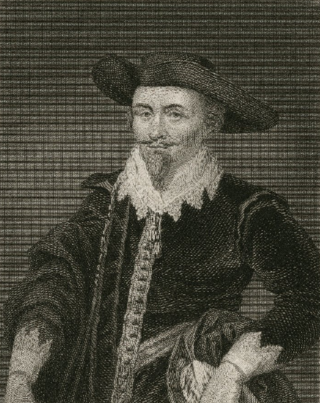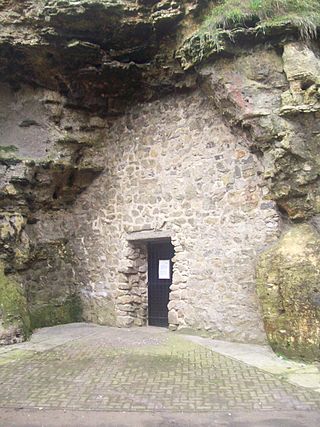Related Research Articles

David Mallet was a Scottish poet and dramatist.

Richard Brathwait or Brathwaite was an English poet.
"The Keel Row" is a traditional Tyneside folk song evoking the life and work of the keelmen of Newcastle upon Tyne. A closely related song was first published in a Scottish collection of the 1770s, but may be considerably older, and it is unclear whether the tune is Scottish or English in origin.

Rowland Burdon was an English landowner and Tory politician from Castle Eden in County Durham.
"Blow the Wind Southerly" is a traditional English folk song from Northumberland. It tells of a woman desperately hoping for a southerly wind to blow her lover back home over the sea to her. It is Roud number 2619.
Sir Cuthbert Sharp (1781–1849) was an English soldier, official and antiquary.
John Carr (1722–1807) was a County Durham born schoolmaster and writer.
Jane Frizzle (c.1600) lived in the seventeenth century in the Derwent Valley near Muggleswick Common, Edmundbyers, County Durham. She lived in a farm cottage known by the name of "Crooked Oak", situated to the north of Mosswood Banks, the birch clad "Sneep” with its rocky point, and the Badger Wood; the cottage probably getting its name from the fact that there was a gnarled oak tree in the vicinity.

Spottee was a character from the eighteenth century, thought to be a stranded French sailor, who after living rough and begging, found a Sea cave, north of the River Wear estuary, to the north of Sunderland, and which he made his home.
Elsie Marley was an alewife in Picktree, near Chester-le-Street, County Durham, England. This is close to Harraton Hall, the home of the Lambton family. A song and jig tune bearing her name, popular in her lifetime, are still current locally.
Benjamin Pye LL.D. was Archdeacon of Durham from 1791 to 1808.
George Maddison was a British politician and joint Parliamentary Under-Secretary of State for Foreign Affairs 1782–83. It is thought that he was born at Hole House, Edmundbyers, in the parish of Lanchester in County Durham. He died suddenly in Paris on 27 Aug 1783, suspected to have been poisoned.
William Sutton was a North East songwriter/poet of the eighteenth/nineteenth century, possibly born in Stockton.
The Bishoprick Garland is a book compiled by Cuthbert Sharp which gives historical details of people, places and events from the Bishopric of Durham, and was published in 1834.
A Beuk o' Newcassell Sangs is a pictorial book giving details of local songs, including the lyrics and in many cases, the music, and all beautifully illustrated with the author's own woodcuts. It was published in 1888. It was reprinted in 1965 by Harold Hill, Newcastle upon Tyne.

Spottee’s Cave is a cave formed in a limestone-magnesium ravine on the seafront of Roker, North East England, between Sunderland, and Whitburn.
Many Geordie songwriters used aliases, for whatever reason. This article lists many of these aliases, giving in some cases, where known, the real name, and in others, some of the songs or poems attributed to them.
References
- ↑ "The Bishoprick Garland" (PDF).